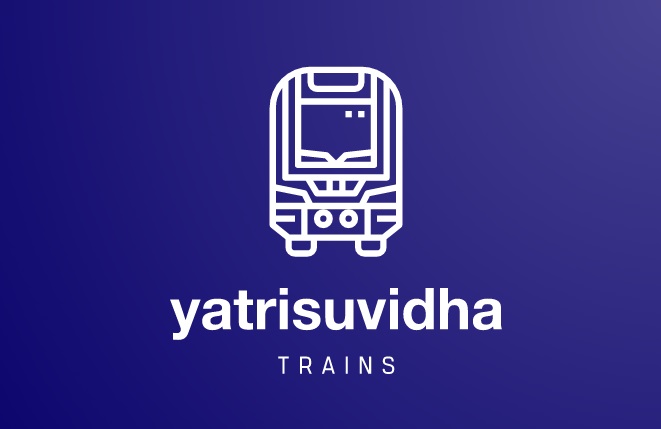
The Concept of Dynamic Pricing in Railways
Dynamic pricing is a revenue management strategy where ticket prices fluctuate based on demand, availability, and booking timelines. Introduced by Indian Railways in premium trains such as the Rajdhani, Shatabdi, and Duronto Express, this system seeks to optimize revenue by charging passengers more during high-demand periods.
While the intent is to bridge financial gaps and modernize railway infrastructure, the implementation has raised questions about its impact on the affordability and accessibility of train travel in India.
Unlike fixed pricing models, where ticket costs remain constant irrespective of demand, dynamic pricing incentivizes early booking and penalizes last-minute travelers with higher fares. This model is similar to airline ticketing but applied to a mode of transportation traditionally considered affordable for the masses.
Impact on Travelers: Affordability for Middle-Class and Rural Passengers
Dynamic pricing has profoundly affected the affordability of train travel, especially for middle-class families, rural travelers, and low-income groups who depend on railways for their mobility.
- Increased Financial Burden
For many middle-class passengers, particularly those booking tickets close to the date of travel, dynamic pricing significantly increases the cost of travel. For instance, ticket prices on premium trains can rise by 1.5 to 2 times the base fare as demand surges. This often makes train travel unaffordable for a section of the population that has traditionally relied on railways as a cost-effective transportation option.
- Rural and Low-Income Travelers Are Marginalized
Rural and low-income passengers, who are often unable to plan their journeys far in advance, face the brunt of dynamic pricing. With limited financial resources and flexibility in travel schedules, many are compelled to opt for slower, less comfortable trains or even buses, affecting their overall experience and accessibility.
- Preference Shift to Alternate Transport
The high costs associated with dynamic pricing have driven some passengers to explore alternative modes of transport, such as budget airlines, which may offer competitive prices during sales. This shift undermines the very objective of the railways: to provide affordable and inclusive transportation to all.
- Seasonal and Festival Impact
During peak travel seasons and festivals, when the demand for train tickets is exceptionally high, dynamic pricing exacerbates the cost challenge. Travelers visiting family or participating in cultural celebrations often find themselves priced out of convenient options.
Comparison with Fixed Pricing Models
Dynamic pricing has both advantages and disadvantages compared to fixed pricing models. Here’s a closer look:
Pros of Dynamic Pricing
Revenue Maximization: Railways earn higher revenue during peak demand periods, aiding in funding infrastructure improvements.
Demand Management: By adjusting prices based on demand, railways can encourage passengers to book in advance, helping manage congestion.
Operational Efficiency: Dynamic pricing incentivizes travelers to utilize off-peak times and routes, leading to better utilization of railway assets.
Cons of Dynamic Pricing
Exclusion of Low-Income Passengers: High costs deter economically disadvantaged groups from using premium services.
Complexity: The fluctuating fares add confusion for passengers unfamiliar with the pricing mechanism.
Erosion of Trust: Passengers accustomed to affordable travel perceive dynamic pricing as exploitative, potentially tarnishing the image of Indian Railways.
Lack of Awareness: Travelers Not Understanding the Pricing Mechanism
One of the significant challenges with dynamic pricing is the lack of awareness and understanding among travelers.
Complex Fare Structures: Many passengers find the pricing mechanism confusing. Without clear communication, they are often surprised by escalating fares during the booking process.
Digital Divide: Rural and elderly travelers, who may lack access to online information, are at a disadvantage in understanding and adapting to dynamic pricing.
Absence of Transparency: Information on fare escalation is not always communicated effectively, leaving travelers feeling deceived.
Solutions
To mitigate the adverse impacts of dynamic pricing and ensure railways remain inclusive, Indian Railways could consider the following solutions:
- Implementing Caps on Fare Increases
Setting upper limits on dynamic fare hikes can ensure ticket prices remain affordable even during peak periods. For instance, limiting the increase to 1.5 times the base fare could strike a balance between revenue generation and affordability.
- Discounts for Low-Income Travelers
Offering discounted tickets for specific income groups, much like concessions for senior citizens and students, can promote equity. These discounts could be funded through cross-subsidization or government subsidies.
- Better Communication of Pricing Policies
Improved transparency about dynamic pricing mechanisms is essential. Initiatives could include:
Real-Time Fare Charts: Displaying fare trends online and at ticket counters to help passengers make informed decisions.
Awareness Campaigns: Using social media, advertisements, and brochures to educate travelers about how dynamic pricing works and its benefits.
- Encouraging Early Bookings
Incentivizing passengers to book tickets early by offering modest discounts or stable fares for initial bookings can benefit both railways and travelers.
- Piloting Alternatives to Dynamic Pricing
Experimenting with hybrid pricing models that blend fixed and dynamic pricing can help identify the most sustainable and inclusive approach. For example, retaining fixed pricing for certain trains or routes while applying dynamic pricing only to high-demand services.
- Expanding Affordable Train Options
Expanding the availability of budget-friendly trains and ensuring their operational efficiency can provide alternatives for passengers priced out by dynamic systems.
Dynamic pricing in Indian Railways is a double-edged sword. While it boosts revenue and enables better resource utilization, it risks alienating the middle-class, rural, and low-income travelers who form the backbone of the rail network’s user base. Addressing the challenges posed by dynamic pricing requires a combination of policy reforms, technological solutions, and empathetic approaches to ensure affordability and accessibility. By striking the right balance, Indian Railways can maintain its commitment to serving all sections of society while progressing toward modernization and financial sustainability.

Leave a Reply